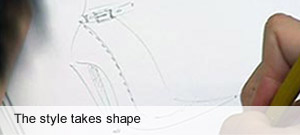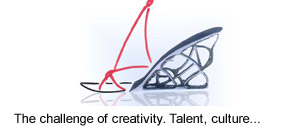A TRIP THROUGH TIME
Since the 1800 cobbler to the industry excellence.
-
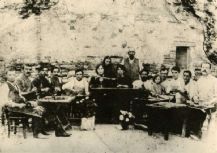
1900
The origins
In 1600 they were only four. Yet, between 1830 and 1900, in San Mauro there were many people who chose to dedicate their lives to the profession of cobbler, repairing shoes on the doorstep or at home, and bartering their work with food and other things.
But only at the beginning of the new century the production of shoes makes a great leap forward, going from the complete footwear collection to selling into the country markets. In these years many people living in San Mauro Pascoli worked in this field, to that extent that they created a community with an own flag (1901). -
1915
The Great War
During the First World War the cobblers that were working for the army obtained the qualification of Suppliers of the military commissariats with exemption form serving. A lot of young people, pushed by the desire of keeping off form the battlefield, approach this job. At the end of the war the cobblers, more and more required, form two cooperative societies for the production with opposite political tendency.
-
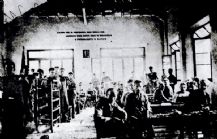
1930
The cobblers of the Army
At the end of the 20s, to face the economic crisis, the cobblers reunite in a cooperative society that was patron by the Fascist Government. The renewal of the commission for the army footwear and above all for the hiking boots for members of the Italian alpine troops, grant a relative well-being to the country, with cobblers that only work by hand, using “ string made of eighteen threads full of pitch because, once the job was over, they had to be waterproof”. (QUOTE)
During a visit in San Mauro, Mussolini claims the necessity of a first mechanization and gives the city, in 1939, the considerable amount of 88.000 Lire: the regime press gives great consideration to this event, exalting the benevolence of Il Duce. -
1945
The postwar period and the reconstruction
At the end of the Second World War, the community of cobblers tries to restore the old fascist cooperative association. Mr Montanari from Bologna carried on this idea with great engagement, and he collected what had been left of the equipment and handwork to build a small factory.
The experiment gives modest results, but drives many families from San Mauro to reopen the activity insomuch as the commerce reaches the neighboring centers of Cesena, Rimini and Forli. -

1955
The economic boom
A decisive turning point gets only in the second half of the Fifties, with the boom of the consumer goods, the transition from small local workshops to the so called “warehouses”, and a lot of families leave the country to work in factories.
Finally, in 1957, the MIR-Mar was built: the first footwear plant of industrial dimensions and high technology. And at the end of the Fifties the first companies that made the district famous, were born. Casadei, Pollini, Sergio Rossi, Zamagni and many more open the factories and face the national market. -
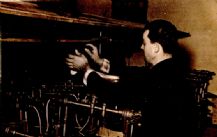
1960
The development of the district
Once the handmade phase was over in the 50s, the San Mauro Footwear district faced the commitment in the 60s and the opening to new more mature productive mechanism. This passage happens thanks to the building of a downright industrial environment up to the new goals and the competition with the traditional footwear areas, such as Veneto and Lombardy. The companies broaden, update, and new businessmen enter the market. Together with the footwear companies subsidiary companies flourish, these ones specialized in the manufacting of semi processed products – soles, heels and bottoms – workshops for the development of models for hand cutting and machine. In the production of the footwear district the “queen” is the shoe for women, but shoes for the man and the child show high- level demand, and quite a few companies are ready to satisfy it.
-
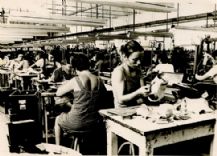
1965
The industrial miracle
The shoes oh San Mauro Pascoli are already sold in the best shops all over Italy and not only: their participartion in exhibitions brings these companies to cross the national borders and France, Belgium and Germany become the first foreign countries to show appreciation for the style and quality of the products. Then, the turning point: at the end of the Sixties the importance of the advertisement becomes clear for a sector that privileges the image, so that the local brands start chasing each other through the pages of the in vogue magazines.
-
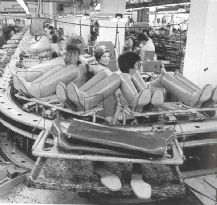
1970
Made in Italy. The international success
The international success is a reality yet, and in Seventies our craftsmen of Italian style cross the ocean to reach our best boutiques and department store made in USA. These are the years of the boots, sporty and elegant, created by our company with skill, technical innovation and great quality. In the footwear scene of San Mauro arises Baldinini, a craftsman with a strong footwear tradition. In few years he reaches international fame.
In these years in San Mauro you can count more than thirty footwear companies and subsidiary companies producing components for the shoe: in the whole territory there’s a breath of footwear and in each family someone knows this art. In Italy, the opening of one brand shops let the companies promote their own brand to the public conquering a bigger and bigger share of devoted. New one brand shops Baldinini, Casadei, Pollini, Sergio Rossi open in the most important Italian cities. -
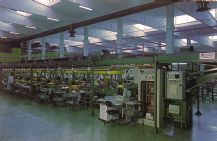
1980
The turning point in luxury
In the 80s San Mauro is more and more active, and, walking in its streets, you can breathe a sophisticated perfume of fashion. These are the years of the Italian style boom with brands such as Armani, Versace, Ferrè and Moschino, all names that bring Italy to compete, and often surpass, the rival France in the fashion sector.
The Italian footwear is first around the world and, thanks to the cooperation with the greatest stylists, the production in San Mauro distinguishes itself more and more because of its luxurious products, a mix of research, style and quality of materials. It’s not an accident that, always in these years, San Mauro Footwear Industry leaves the difficult completion with the cheapest productions, to choose a luxury product and a medium-high target market. In this transitional phase, some small realities start producing for bigger companies in San Mauro and so they specialize strongly. New agreements with international distributors take these brands to the best shops in Japan and in the Far East. -
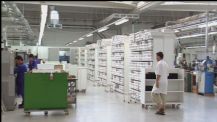
1990
The leading brands and the excellence weaving factory
In the last twenty years the footwear scene in San Mauro has been progressively modified in favour of a smaller amount of companies of bigger dimensions.
At the beginning of the 90s, alongside the brands already established on international markets - such as Baldinini, Casadei, Pollini, Sergio Rossi - we witness a growth of the Giuseppe Zanotti-Vicini “phenomenon”, already presents in the scenery of the 80s. The style and the passion for the shoe lead this brand to climb the international market and to place into the best shops in the world, in the best fashion magazines and to be worn by the best show business stars. -
2000
An history that continues
In the past, as today, the outlook in the footwear district is composed of great brands – among the new ones Gianvito Rossi, quickly asserting for the luxury product – and medium-small companies that work constantly to search for perfection, style and uniqueness: sole factories, heels factories and embroidery factories are stimulated to do better and better to satisfy every client, even the most extravagant request. They have very specific roles and skills, such as model makers, cutters, decorators, assemblers, workers and employees, so they are always wanted by companies that produce luxurious products: these skilled workers love shoes, they know each detail and are very proud of their job.

